Picture this: the scent of freshly baked cake wafting through the air, promising a delightful treat for your taste buds. But as you eagerly flip your Bundt pan, anticipation turns to apprehension as the cake stubbornly clings to its confines.
Fret not, for in the realm of baking, triumph often lies in the liberation of the delicacies from their molds. Unraveling the mysteries of how to gracefully release a cake from a Bundt pan transforms from a daunting task into a satisfying culinary conquest.
Join me as we embark on a journey through the twists and turns of Bundt pan liberation, unlocking the secrets to effortlessly extracting that golden-brown masterpiece without a crumb left behind.
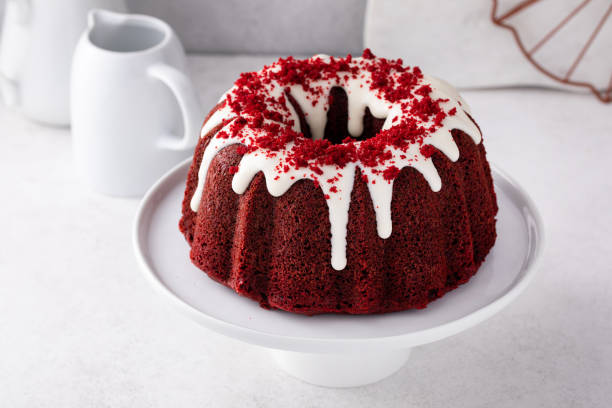
How To Get Cake Out Of Bundt Pan
Grease Your Bundt Pan Properly
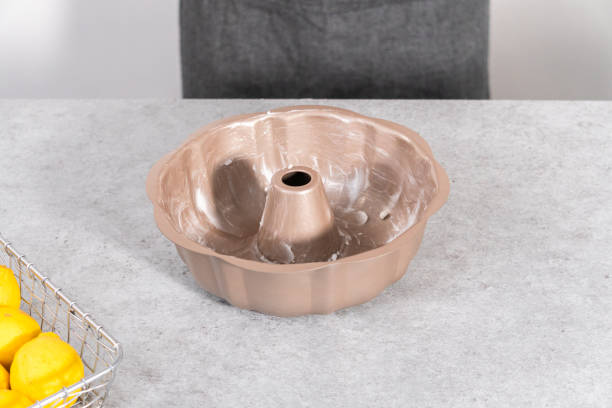
To ensure a smooth release of your cake from a Bundt pan, proper greasing is paramount. Begin by thoroughly coating the interior surface of the pan with a layer of solid vegetable shortening or softened butter.
Pay special attention to the intricate design of the pan, making sure every nook and cranny is adequately covered. Alternatively, you can use a non-stick baking spray for convenience.
Be generous with the greasing, but avoid excessive pooling of grease in the bottom of the pan, as this can lead to an uneven distribution and potentially cause the cake to stick.
Once greased, lightly dust the pan with flour, tapping out any excess to create a thin, even layer. This additional step helps create a barrier between the cake batter and the pan, further preventing sticking.
With proper greasing, your Bundt cake should effortlessly slide out of the pan, preserving its beautiful shape and design.
Cool Before Flipping
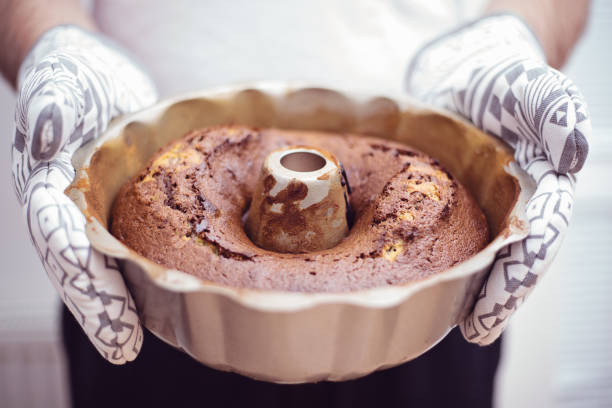
Once your Bundt cake has finished baking, resist the temptation to immediately flip it out of the pan. Instead, allow the cake to cool in the pan for about 10 to 15 minutes.
This cooling period allows the cake to slightly contract, pulling away from the sides of the pan, which makes it easier to release. Additionally, attempting to remove a hot cake from the pan can result in it breaking apart or sticking.
Patience during this step ensures a clean and successful release. After the brief cooling period, gently run a thin knife or offset spatula around the edges of the cake to further loosen it from the pan.
Once you feel confident that the cake has loosened, place a wire cooling rack or serving plate over the top of the Bundt pan and quickly flip it over in one fluid motion.
With a bit of luck and proper cooling, your beautifully baked Bundt cake should effortlessly slide out of the pan, ready to be admired and enjoyed.
Cake Not Coming Out? Give it a Bang
If your cake stubbornly refuses to release from the Bundt pan after cooling and loosening, don’t panic—there’s still hope. Sometimes, a gentle tap or two can encourage the cake to break free from its confines.
Place a kitchen towel or oven mitt over the top of the pan to protect your hands, then firmly but carefully tap the bottom and sides of the pan on a sturdy surface. This action helps to dislodge any areas where the cake may be sticking.
Be cautious not to bang too forcefully, as this could damage the delicate shape of the cake. After a few taps, try flipping the pan over again onto a wire rack or serving plate. If the cake still doesn’t budge, don’t despair.
You can try placing the entire pan in a warm oven for a couple of minutes to slightly soften the outer edges of the cake, making it easier to release. With a combination of patience and gentle persuasion, you’ll soon have your Bundt cake gracefully released and ready to be enjoyed.
No Luck? Let Gravity Do its Job
If all else fails and your Bundt cake seems determined to remain snugly nestled in the pan, it’s time to let gravity work its magic. After attempting to loosen the cake with tapping and warming methods, place the pan back on a flat surface and let it sit for a few more minutes.
This brief pause allows the cake to settle and may help it release naturally. Then, with a confident yet gentle hand, try flipping the pan over onto a wire cooling rack or serving plate once more.
Sometimes, the simple act of waiting a little longer allows the cake to release on its own, aided by the force of gravity. If you’re still met with resistance, you can try tapping the bottom of the pan again or even gently shaking it to encourage the cake to slide out.
Remember to remain patient and avoid rushing this process to prevent damaging the cake’s shape. With a bit of perseverance and a willingness to let gravity take the lead, you’ll soon have your Bundt cake gracefully freed from its pan, ready to be admired and enjoyed.
Hiding Imperfections
In the event that your Bundt cake doesn’t come out as perfectly as you’d hoped, there are clever ways to hide any imperfections and still present a beautifully finished dessert.
If the cake breaks or sticks in certain areas, strategically place decorative elements like fresh fruit, whipped cream, or a dusting of powdered sugar to cover any flaws.
Alternatively, consider glazing the cake with a glossy icing or ganache, which not only adds flavor but also provides a smooth, polished finish that can disguise minor imperfections.
Another option is to slice the cake and arrange it on a serving platter, allowing each piece to showcase its individual charm rather than focusing on the overall appearance.
Remember, imperfections can add character and homemade charm to your Bundt cake, so embrace them and get creative with your presentation. With a bit of ingenuity and flair, you can turn even the most imperfect cake into a stunning centerpiece for any occasion.
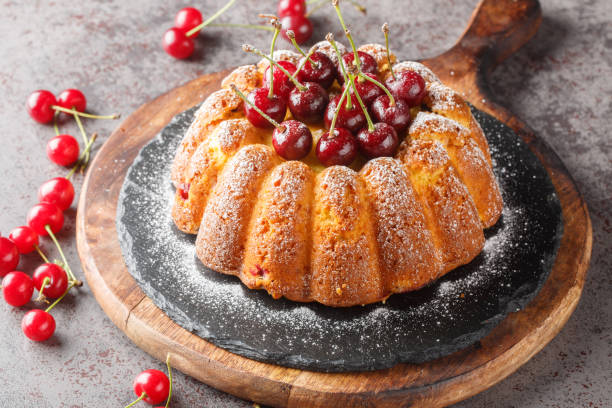
Post-Removal Tips
After successfully removing your Bundt cake from the pan, there are a few additional tips to ensure it stays fresh and looks its best. Firstly, allow the cake to cool completely on a wire rack before serving or storing.
This helps prevent condensation from forming on the cake’s surface, which can make it soggy. Once cooled, you can add a final touch by dusting the cake with powdered sugar or drizzling it with a glaze for extra flavor and visual appeal.
To keep your Bundt cake moist and delicious, store it in an airtight container at room temperature for up to three days. If you need to store it for longer, you can freeze the cake by wrapping it tightly in plastic wrap and aluminum foil.
When ready to serve, thaw the cake in the refrigerator overnight and bring it to room temperature before enjoying.
Lastly, don’t forget to clean your Bundt pan promptly after use. Wash it with warm, soapy water and a soft sponge to remove any leftover grease or crumbs. If there are stubborn spots, you can soak the pan in warm, soapy water to loosen them before scrubbing.
Avoid using abrasive cleaners or harsh scrubbing tools, as they can damage the pan’s non-stick coating. Once clean, dry the pan thoroughly before storing it to prevent rust or corrosion.
Common Problems And Their Solutions
Troubleshooting common Bundt cake problems requires a blend of patience and finesse. Here are some solutions to address these issues:
Cake breaking or crumbling upon removal
- Solution: Allow the cake to cool in the pan for the recommended time before attempting to remove it. Use a thin knife or offset spatula to gently loosen the edges of the cake from the pan. If the cake still breaks or crumbles, it might be underbaked. Ensure it’s fully cooked by inserting a toothpick into the center; if it comes out clean, the cake is ready.
Excessively greasy or floury residue on the cake
- Solution: Adjust your greasing and flouring technique. Be sure to grease the pan thoroughly, covering all crevices, but avoid excessive greasing to prevent pooling. Dust the greased pan lightly with flour, tapping out any excess. If there’s still residue on the cake, try using less flour during the greasing process.
Persistent sticking despite best efforts
- Solution: If the cake continues to stick, try cooling it for a few more minutes in the pan. Then, tap the bottom and sides of the pan gently on a flat surface to help release the cake. If this doesn’t work, place the pan in a warm oven for a couple of minutes to soften the edges. Alternatively, invert the pan over a wire rack and let gravity assist in releasing the cake. If all else fails, carefully run a thin knife or offset spatula around the edges of the cake once more before attempting to remove it again.
By troubleshooting these common problems with patience and the appropriate techniques, you can overcome challenges and achieve a beautifully baked Bundt cake every time.

Expert Tips and Tricks
Achieving a perfect Bundt cake requires not just a good recipe, but also some expert tips and tricks to ensure success. Here are some invaluable suggestions:
Prepare the Pan Properly
Take extra care to grease your Bundt pan thoroughly, making sure every intricate detail is covered. Consider using a baking spray with flour for convenience and even coverage. This step is crucial to ensure the cake releases smoothly from the pan after baking.
Use Room Temperature Ingredients
Bring all your ingredients, particularly eggs and butter, to room temperature before starting. Room temperature ingredients incorporate more evenly into the batter, resulting in a smoother texture and better rise.
Avoid Overmixing
Be cautious not to overmix the batter, as this can lead to a dense and tough cake. Mix just until the ingredients are combined and no streaks of flour remain. Overmixing can also result in excess air bubbles, which may cause the cake to rise unevenly or collapse.
Tap Out Air Bubbles
After pouring the batter into the prepared pan, gently tap the pan on the countertop to release any air bubbles trapped in the batter. This step helps ensure a more even texture and prevents unsightly air pockets in the finished cake.
Rotate During Baking
If your oven has hot spots, consider rotating the Bundt pan halfway through the baking time to ensure even baking. This simple step can help prevent one side of the cake from overbaking while the other side remains underdone.
Cool Completely Before Glazing
Allow the Bundt cake to cool completely in the pan before attempting to glaze it. Glazing a warm cake can cause the glaze to melt and slide off rather than adhering beautifully to the surface. Patience during the cooling process pays off with a perfectly glazed cake.
Decorate with Flair
Get creative with your cake decorations! A simple dusting of powdered sugar can add elegance, while a drizzle of glaze or ganache enhances both flavor and presentation. Fresh fruit, edible flowers, or chopped nuts can also add texture and visual appeal to your finished masterpiece.
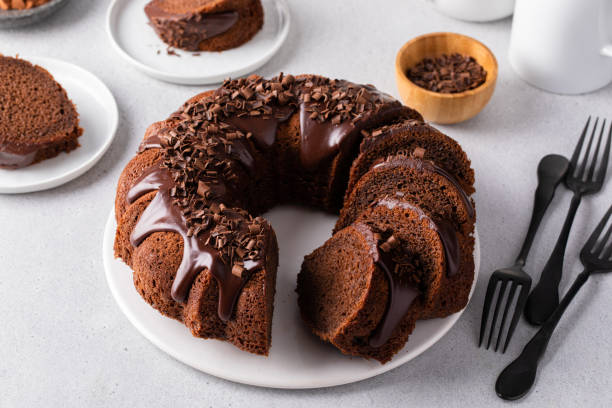
Frequently Asked Questions (FAQs) – How To Get Cake Out Of Bundt Pan
Why is it important to properly grease the Bundt pan before baking?
Ensuring your Bundt pan is well-greased is essential for easy cake release. It prevents sticking and ensures your cake comes out perfectly intact.
What are some effective methods for greasing a Bundt pan?
We recommend using a non-stick cooking spray or brushing the pan with melted butter or oil. Make sure to coat every nook and cranny thoroughly to facilitate smooth release.
How long should I let the cake cool before attempting to remove it from the pan?
Allowing the cake to cool in the pan for about 10-15 minutes helps it to firm up slightly, making it easier to release without crumbling. Patience is key for a flawless removal.
What’s the best technique for loosening the cake from the pan?
Gently run a butter knife around the edges and inner tube of the pan to loosen any stuck areas. Then, carefully invert the pan onto a cooling rack or plate and give it a few gentle taps to coax the cake out.
What if my cake still sticks to the pan after greasing and cooling?
If you encounter sticking, don’t panic! Place a damp towel or cloth over the inverted pan and let it sit for a few minutes. The steam created can help release the cake. Alternatively, try placing the pan in warm water for a few minutes to loosen the cake.
How can I ensure my cake retains its shape when removing it from the Bundt pan?
For extra insurance against sticking, try using a silicone Bundt pan or a high-quality non-stick Bundt pan. These options often result in cleaner releases and intact cakes.
Can I make the removal process even easier with any additional tips or tricks?
Absolutely! If you’re still concerned about sticking, consider dusting the greased pan with a light coating of flour or cocoa powder after greasing. This can provide an extra layer of insurance against sticking.
Is it possible to salvage a broken cake during removal?
Fear not! If your cake happens to break during removal, don’t fret. Simply piece it back together and let it cool completely. A layer of frosting or glaze can often disguise any imperfections, leaving you with a delicious and visually appealing treat.
What’s the best way to clean a Bundt pan after removing the cake?
After enjoying your delicious creation, allow the pan to cool completely before washing it with warm, soapy water. A soft sponge or brush can help remove any leftover residue. Always ensure the pan is thoroughly dry before storing to prevent rust or corrosion.
Any final words of advice for achieving cake perfection in a Bundt pan?
Patience, preparation, and a positive attitude are your best allies! With proper greasing, cooling, and gentle handling, you’ll soon become a Bundt cake master. Don’t be discouraged by mishaps – each baking experience is a learning opportunity on the path to culinary greatness!
Conclusion
In conclusion, mastering the art of removing cake from a Bundt pan is an essential skill for any baker.
By following the simple yet effective techniques outlined, such as properly greasing and flouring the pan, allowing the cake to cool sufficiently, and gently tapping and shaking the pan, one can ensure a flawless release every time.
Additionally, employing alternative methods like using a butter knife or hot water bath can be invaluable tools in the event of stubborn sticking.
With patience, practice, and attention to detail, the process of freeing a Bundt cake from its pan can be transformed from a daunting task into a seamless and satisfying finale to the baking journey.
Other Articles You May Also Like: